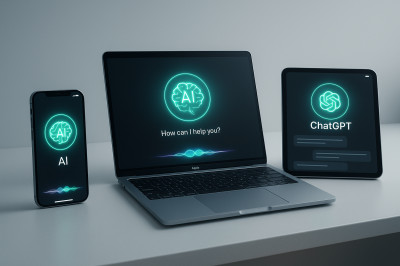 By Admin
Published 1751037925
By Admin
Published 1751037925
Would you trust a robot to stack shelves, serve coffee, or carry boxes in your workplace?
In 2025, that question isn’t hypothetical. Humanoid robots are clocking in—and they’re here to stay.
In a scene that once lived only in sci-fi films, humanoid robots are officially joining the workforce in 2025. And no—we're not talking about test labs or isolated demos. These walking, talking, AI-driven machines are now helping humans in factories, retail spaces, and logistics centers around the world.
Welcome to the age of the employed android.
🤖 Who’s Leading the Humanoid Revolution?
Several companies are racing to put practical humanoid robots into real-world environments:
1. Figure AI
-
Signed a deal with BMW to deploy its Figure 01 robots in manufacturing plants
-
Capable of walking, carrying objects, and completing repetitive tasks
-
Trained via neural networks and computer vision to adapt and learn
2. Tesla Optimus
-
Tesla’s humanoid robot is being designed to handle mundane or unsafe tasks
-
Expected to be integrated into Tesla factories and warehouses
-
Powered by the same AI infrastructure as Tesla Autopilot
3. Agility Robotics
-
Their Digit robot is already working with Amazon to move containers and sort packages
-
Known for its bird-like legs and smooth gait
-
Built for supply chain automation
These robots don’t just walk—they see, think, and react to environments in real time, thanks to advanced AI and edge computing.
Where Are They Working Right Now?
Humanoid robots are already deployed in:
-
🚚 Warehouses – carrying boxes, loading goods, optimizing logistics
-
🏭 Factories – assembling parts, operating machines, assisting humans
-
☕️ Retail & Cafés – greeting customers, taking orders, cleaning tables
-
🏥 Hospitals – delivering medications, guiding visitors
This isn’t some far-off pilot test. Companies like BMW, Amazon, and even small startups are putting humanoids to work in controlled but live environments.
What Makes Them Different From Normal Robots?
Unlike wheeled robots or robotic arms, humanoid robots are designed to:
-
🧠 Understand human environments (stairs, doors, unpredictable layouts)
-
🦿 Use tools and spaces made for humans (e.g., elevators, carts, desks)
-
🤝 Work alongside humans, not just in isolation
Their AI brains are trained to:
-
Recognize people, voice commands, and gestures
-
Plan paths and avoid collisions
-
Learn and adapt through reinforcement learning
This allows for faster deployment—without redesigning entire workflows or factories.
Will They Replace Human Jobs?
Not yet—and maybe not ever in the way people fear.
These robots are currently focused on "3D jobs":
-
Dirty
-
Dull
-
Dangerous
The goal isn't to replace creativity, empathy, or decision-making. Instead, they’re taking over the low-skill, repetitive, physically demanding tasks that cause burnout or injury.
In fact, most companies deploying humanoid robots still need more human workers—especially in roles that require flexibility, emotional intelligence, or problem-solving.
What’s Next for Humanoid Robots?
Expect to see:
-
⚙️ Faster learning via cloud-based AI updates
-
🧠 More natural communication with language models like GPT-4o
-
🏬 Widespread adoption in retail, security, logistics, and healthcare
-
📱 App-based control interfaces for human managers
Humanoid robots may soon become as common as delivery drones and smart assistants.
Dino Code LA Takeaway:
At Dino Code LA, we track the trends that move from hype to real-life impact—and this is one of them. Humanoid robots entering the workforce means rethinking productivity, automation, and human-AI collaboration.
If you’re a founder, creative, or tech lover—don’t watch from the sidelines. This is your moment to learn, adapt, and innovate.
Curious about how AI, robotics, and design are merging in 2025?
Follow @dinocodela and check out dinocodela.com for expert breakdowns, trend forecasts, and future-first blogs that decode what’s coming next.
We don't just chase the future—we build it.

